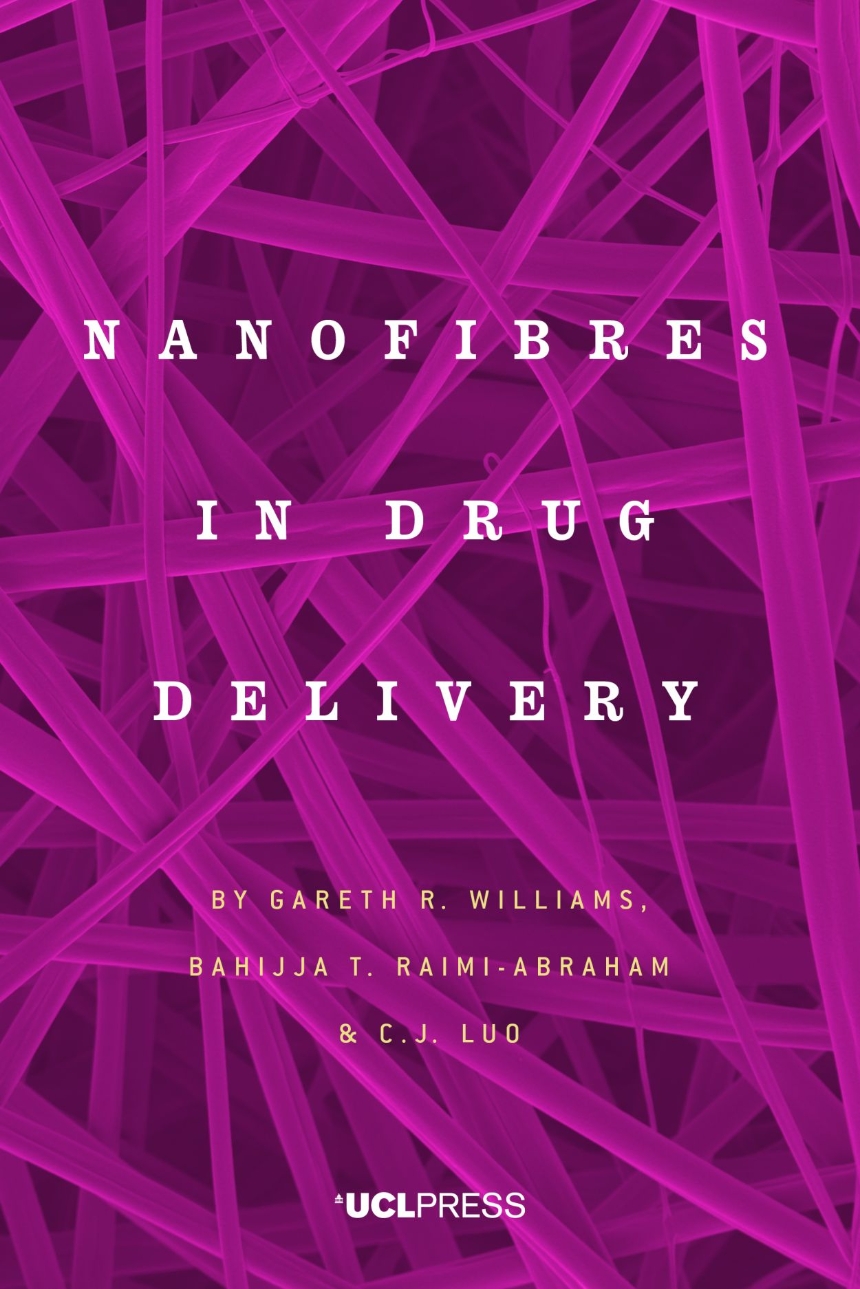Distributed for UCL Press
Nanofibres in Drug Delivery
In recent years, there has been an explosion of interest in the production of nanoscale fibers for drug delivery and tissue engineering. Nanofibres in Drug Delivery aims to outline to new researchers in the field the utility of nanofibers in drug delivery, and to explain to them how to prepare fibers in the laboratory. The book begins with a brief discussion of the main concepts in pharmaceutical science. The authors then introduce the key techniques that can be used for fiber production and explain briefly the theory behind them. They discuss the experimental implementation of fiber production, starting with the simplest possible set-up and then moving on to consider more complex arrangements. As they do so, they offer advice from their own experience of fiber production, and use examples from current literature to show how each particular type of fibers can be applied to drug delivery. They also consider how fiber production could be moved beyond the research laboratory into industry, discussing regulatory and scale-up aspects.
260 pages | 6.14 x 9.21 | © 2018
Free digital open access editions are available to download from UCL Press.
Table of Contents
"1 Introduction
1.1 Preamble
1.2 Nanofibres
1.3 Key concepts in drug delivery
1.4 Nanofibre characterisation
1.5 An overview of contemporary pharmaceutical technology
1.6 Summary
1.7 References
1.8 Bibliography
2 Electrospinning fundamentals
2.1 Background
2.2 A brief history of electrospinning
2.3 EHD fundamentals
2.4 Understanding the electrospinning process
2.5 The parameters affecting electrospinning
2.6 The experimental set- up
2.7 Fibre properties
2.8 Characterisation
2.9 Summary
2.10 References
3 Monoaxial electrospinning
3.1 Introduction
3.2 Experimental considerations
3.3 Fibre properties
3.4 Some typical results
3.5 Fast- dissolving drug delivery systems
3.6 Extended- release systems
3.7 pH- controlled delivery
3.8 Pulsatile release
3.9 Multilayer materials
3.10 Thermoresponsive systems
3.11 Emulsion and suspension electrospinning
3.12 Tissue- engineering applications
3.13 Using fibres as sacrificial templates
3.14 Conclusions
3.15 References
4 Coaxial and multi- axial electrospinning
4.1 Introduction
4.2 Experimental considerations
4.3 Extended- release systems
4.4 Targeted drug delivery
4.5 Multifunctional materials
4.6 Other applications
4.7 Protein delivery systems
4.8 Cell electrospinning
4.9 Modified coaxial spinning
4.10 Triaxial and quad- axial systems
4.11 Conclusions
4.12 References
5 Side- by- side electrospinning
5.1 Introduction
5.2 Experimental considerations
5.3 Janus fibres in drug delivery
5.4 Conclusions
5.5 References
6 Alternative nanofibre fabrication approaches
6.1 Introduction
6.2 Alternating current (AC) electrospinning
6.3 Melt electrospinning
6.4 Centrifugal spinning
6.5 Solution blowing and melt blowing
6.6 Electroblowing
6.7 Pressurised gyration
6.8 Electrospraying
6.9 Microfluidic spinning
6.10 Fibre production on the move
6.11 Other techniques
6.12 Conclusions
6.13 References
7 Moving from the bench to the clinic
7.1 Introduction
7.2 Scale- up
7.3 Regulatory requirements and GMP manufacturing
7.4 Conclusions
7.5 References
8 Conclusions and outlook "
1.1 Preamble
1.2 Nanofibres
1.3 Key concepts in drug delivery
1.4 Nanofibre characterisation
1.5 An overview of contemporary pharmaceutical technology
1.6 Summary
1.7 References
1.8 Bibliography
2 Electrospinning fundamentals
2.1 Background
2.2 A brief history of electrospinning
2.3 EHD fundamentals
2.4 Understanding the electrospinning process
2.5 The parameters affecting electrospinning
2.6 The experimental set- up
2.7 Fibre properties
2.8 Characterisation
2.9 Summary
2.10 References
3 Monoaxial electrospinning
3.1 Introduction
3.2 Experimental considerations
3.3 Fibre properties
3.4 Some typical results
3.5 Fast- dissolving drug delivery systems
3.6 Extended- release systems
3.7 pH- controlled delivery
3.8 Pulsatile release
3.9 Multilayer materials
3.10 Thermoresponsive systems
3.11 Emulsion and suspension electrospinning
3.12 Tissue- engineering applications
3.13 Using fibres as sacrificial templates
3.14 Conclusions
3.15 References
4 Coaxial and multi- axial electrospinning
4.1 Introduction
4.2 Experimental considerations
4.3 Extended- release systems
4.4 Targeted drug delivery
4.5 Multifunctional materials
4.6 Other applications
4.7 Protein delivery systems
4.8 Cell electrospinning
4.9 Modified coaxial spinning
4.10 Triaxial and quad- axial systems
4.11 Conclusions
4.12 References
5 Side- by- side electrospinning
5.1 Introduction
5.2 Experimental considerations
5.3 Janus fibres in drug delivery
5.4 Conclusions
5.5 References
6 Alternative nanofibre fabrication approaches
6.1 Introduction
6.2 Alternating current (AC) electrospinning
6.3 Melt electrospinning
6.4 Centrifugal spinning
6.5 Solution blowing and melt blowing
6.6 Electroblowing
6.7 Pressurised gyration
6.8 Electrospraying
6.9 Microfluidic spinning
6.10 Fibre production on the move
6.11 Other techniques
6.12 Conclusions
6.13 References
7 Moving from the bench to the clinic
7.1 Introduction
7.2 Scale- up
7.3 Regulatory requirements and GMP manufacturing
7.4 Conclusions
7.5 References
8 Conclusions and outlook "

